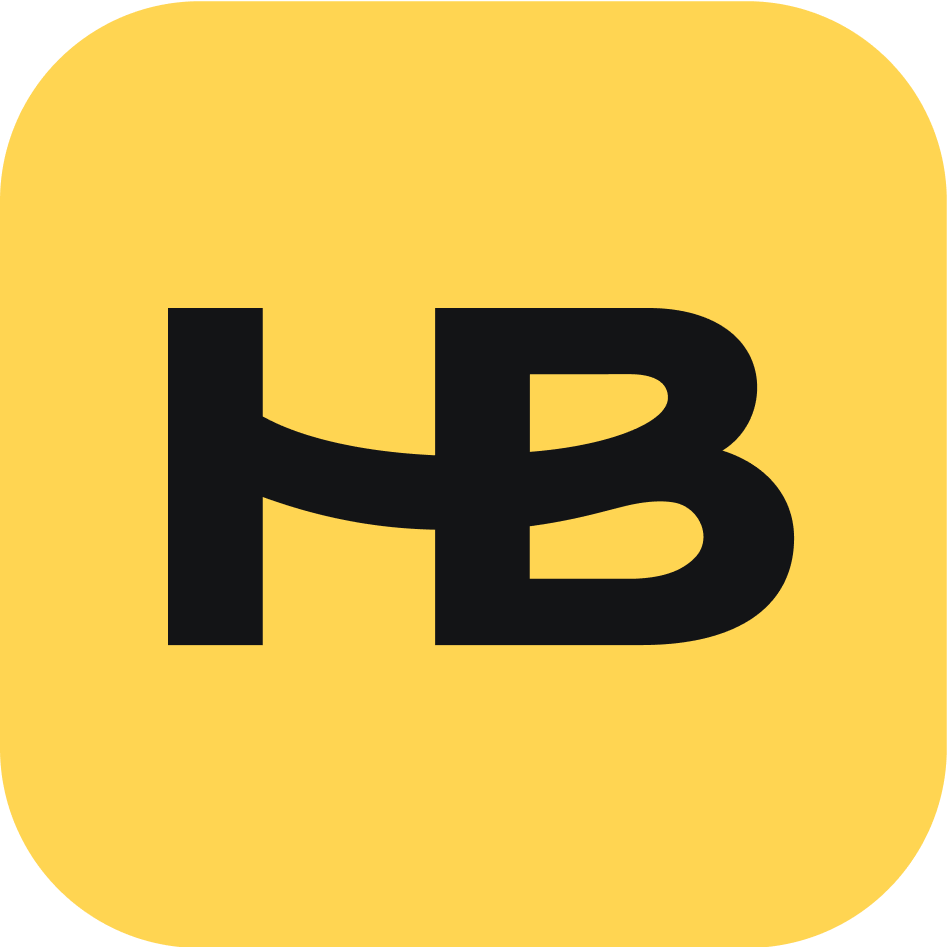New COVID relief bill makes $284B available to support self-employed and small business owners. Learn what’s changed, whether you’re eligible and how to apply for a PPP loan.

In the final days of 2020, a second stimulus package was signed into law making $900 billion in federal funding available for COVID relief programs. Included in the new bill is $284 billion to reopen the Paycheck Protection Program for a second round (PPP2) and give small business owners access to emergency funds once again.
The new bill has made several important changes that make it easier to apply for and use a PPP loan. Here’s what you need to know:
- First-time loan recipients and second-time PPP borrowers are eligible for funding.
- You can now spend your PPP loan on a wider range of expenses.
- The list of businesses who are eligible for a loan has been expanded, this includes self-employed individuals.
- Applying for forgiveness for loans under $150K has been made simpler.
Ultimately, many of the barriers to accessing the program have been removed and funds have been specifically earmarked for businesses with fewer than 10 employees.
But much like the first round of funding, demand for PPP2 loans is expected to be high. If you’re planning to apply for a loan (whether for the first or second time), we recommend getting your application in as soon as possible.
We’ve put together some new FAQs to provide you with the information you need to make the best decision for your business.
Remind me, what is the Paycheck Protection Program?
The Paycheck Protection Program (PPP) was first created as part of the Coronavirus Aid, Relief and Economic Security (CARES) Act passed on March 27, 2020. The program made federal aid available for small and medium-sized businesses to help them weather the economic downturn caused by the COVID-19 crisis.
In late April 2020, $310 billion in additional funding was added to the program. Changes were also made to lengthen the time recipients have to spend the money and make it easier to apply for loan forgiveness. Learn more about that round of funding here.
The latest round of funding, PPP2, was passed by Congress in December 2020. The loans are backed by the Small Business Administration (SBA).
What’s different about this round of PPP funding?
Funding is available to both first-time loan recipients and businesses that received a PPP loan in 2020. In other words, if you applied for PPP the first time and got it, you may be eligible for a second-draw loan this time as well. Businesses in each category must meet eligibility criteria in order to qualify.
Business owners now have more flexibility in what they can spend their money on. While the 2020 PPP loans were restricted to cover payroll costs, rent and utilities only, the second round of PPP expands eligible expenses. You can now use your loan to pay for things like business software, property damage and personal protection equipment, among other things. Group health insurance benefits can also now be included in payroll costs.
When it comes to loan forgiveness, expenses must still be split 60/40 between payroll costs/other expenses to qualify. However, now that the list of eligible expenses has been expanded, meeting these requirements is expected to be much easier for businesses of all sizes. If you follow the forgiveness guidelines, your PPP loan will be fully forgiven.
Plus, the process to apply for forgiveness for loans under $150K has been streamlined to a simple one-page application.
The new bill has also expanded the types of businesses that are eligible to receive a PPP loan. This includes:
- Sole proprietors
- Independent contractors
- Self-employed individuals
- Certain non-profits
- Seasonal employer; defined as businesses that operate no more than seven months within the year or earn no more than a third of gross receipts within a six-month period.
- Faith-based organizations that have less than 150 employees.
- Housing cooperatives that employ less than 300 people.
The guidelines for the second round of funding make clear that interest rates on PPP loans are non-compounding and non-adjustable. Forgiven PPP loans are also not taxable and forgiven expenses are tax-deductible.
What changes did the President Biden make to the PPP loan program?
On Monday, February 22, President Biden announced the following changes to SBA’s coronavirus PPP program to ensure equity:
- Allows sole proprietors, independent contractors, and self-employed individuals to receive more financial support because the PPP’s funding formula has been revised for these categories of applicants;
- Eliminates an exclusionary restriction on PPP access for small business owners with prior non-fraud felony convictions, consistent with a bipartisan congressional proposal;
- Eliminates PPP access restrictions on small business owners who have struggled to make student loan payments by eliminating student loan debt delinquency as a disqualifier to participating in the PPP; and
- Ensures access for non-citizen small business owners who are lawful U.S. residents by clarifying that they may use Individual Taxpayer Identification Number (ITIN) to apply for the PPP.
The SBA released guidance stating that the changes Biden to the Paycheck Protection Program will not be retroactive. Any borrower who has already been approved by the SBA will not be eligible for increased funds.
Am I eligible to receive a PPP2 loan?
You are eligible for a first-draw PPP loan if:
- Your business has less than 500 full-time, part-time or seasonal employees.
- If your business has multiple locations, you may not have more than 500 employees per location.
- Your business was operational before February 15, 2020.
- Your business is still open and operational.
You are eligible for a second-draw PPP loan if:
- Your business has less than 300 full-time, part-time or seasonal employees.
- If your business has multiple locations, you may not have more than 300 employees per location.
- You are able to demonstrate a revenue reduction of at least 25% in the first, second or third quarter of 2020 (when compared with the same quarter in 2019).
- You have used or will use the full amount of the first PPP loan that you received before you receive funding for the second loan.
- Your business was operational before February 15, 2020.
- Your business is still open and operational.
How much money will be available to me?
First-draw PPP loan limitations
The maximum amount a business that has not yet received a PPP loan can borrow is the lesser of:
- 2.5 times the average monthly payroll costs and healthcare costs.
- $10 million
Second-draw PPP loan limitations:
Any business that is applying for a second-draw loan will be subject to more stringent limitations. The maximum second PPP loan amount is the lesser of:
- 2.5 times the average monthly payroll costs and healthcare costs in the year prior to when the loan was received or within the calendar year.
- $2 million
Note: additional specifications exist for restaurants and other hospitality businesses like hotels and casinos.
What expenses can I use a PPP loan for?
The list of eligible expenses was expanded in December 2020 and now applies to all PPP loans. You can spend your PPP loan on:
- Payroll costs, which means all payments that are:
- Salary, wage, commission or similar compensation
- Payment of cash tip or equivalent
- Payment for vacation, parental, family, medical or sick leave
- Allowance for dismissal or separation
- Payment required for the provisions of group health care benefits, including insurance premiums
- Payment of any retirement benefit
- Payment of State of local tax assessed on the compensation of employees
- The sum of payments of any compensation to or income of a sole proprietor or independent contractor that is a wage, commission, income, net earnings from self-employment or similar compensation and that is in an amount that is not more than $100,000 in one year as prorated for the covered period.
- Costs related to group health care benefits during periods of paid sick, medical or family leave and insurance premiums.
- Employee salaries, commissions or similar compensations
- Payments of interest on any mortgage obligations
- Rent
- Utilities
- Interest on any other debt
- Covered operations expenditure like:
- Payments for any business software or cloud computing services, product or service delivery.
- The processing, payment or tracking of payroll expenses
- Human resources, sales and billing functions
- Accounting or tracking of supplies, inventory, records and expenses
- Covered property damage costs in connection with any public disturbances in 2020.
- Covered supplier costs including operating or capital expenditures to facilitate the adaptation of the business activities during COVID.
- Covered worker protection expenditures.
When can I apply?
Applications for first-draw PPP loans open on Wednesday, January 13, 2021.
Applications for second-draw PPP loans open on Friday, January 15, 2021.
The deadline to apply for a PPP2 loan is March 31, 2021.
The SBA is making second round PPP loans available on a first-come, first-served basis and funding is not expected to last until the deadline. If you’re looking to obtain a loan, we recommend gathering your documents now and applying at soon as possible.
What documents do I need to apply?
First and second-time applicants will need the following documentation to apply for a PPP loan.
- Average monthly payroll costs (see list of payroll costs above)
- Business bank account and routing number
- NAICs code for your business, which can be found with the help of the NAICs sector search tool.
- Ownership details (applicable to anyone with over 20% ownership)
- You must provide each owner’s: name; Social Security Number (SSN), Taxpayer Identification Number (TIN) or Employer Identification Number (EIN); address; percentage ownership; and email address.
- For second-draw loan applicants only: you’ll need to provide your SBA loan number from your first PPP loan.
- You may find this in your past email communications with your lender and/or your promissory note.
If you are self-employed as a sole proprietor or independent contractor without employees:
- IRS Form 1040 Schedule C for 2019 or 2020.
If you are a partnership without employees:
- 2019 Schedule K-1 (IRS Form 1065).
If you have employees (even as a partnership):
- IRS Form 940 for 2019 or 2020.
- IRS Form 941 for 2019 or 2020 (since this is a quarterly form, you must include all four quarters. If you were established less than a year ago, you need to provide a Form 941 for every quarter since you were established).
- IRS Form 944 for 2019 or 2020.
- Payroll processor records from a PEO (Professional Employer Organization).
I got a PPP loan last year. Do I have to go through the same institution to get my second loan?
No, you don’t have to use the same financial institution that you used for your first PPP loan. As long as you have your first-draw SBA loan number and all the required documentation listed above, you can apply through a different lender who is supporting PPP2 loan applications.
There are fewer banks participating this time and some are only offering second-draw loan applications to existing customers. We recommend checking with your financial institution now to determine whether they are supporting PPP2 loans.
HoneyBook is working with Blue Ridge Bank, a leading commercial bank and Community Financial Institution with over 120 years of experience helping small businesses, who have the capacity to accept both first-time and second-draw PPP loan applications.
How can HoneyBook help me apply for a PPP2 loan?
HoneyBook has partnered with a fintech company, jaris, and CFI certified bank, Blue Ridge Bank, to make applying for a second round PPP loan simple and easy. Through our partnership with jaris, and based on the information we have about your business, we can also make applying for loan forgiveness easier. HoneyBook members will receive an email with all the details they need to get started. Don’t delay, begin gathering your documents now.
Our PPP2 application program will conclude on Wednesday, February 17, 2021. Blue Ridge Bank and jaris will continue working on all applications that are still in process. If you were not able to apply through the HoneyBook portal, you should still be able to apply with your existing bank.
I’m a second-time PPP borrower but wasn’t in business for all of 2019. How does the 25% reduced revenue requirement apply to me?
If your business was in operation for all of 2019, you need to show a 25% reduction in revenue in 2020 for the same quarter in 2019.
If your business was not in operation for all of 2019, but was in operation by February 15, 2020, and can demonstrate more than a 25% reduction in revenue during one of the quarters in which it was in operation, you would qualify for a second PPP loan.
For example, Company X started its operations in the 3rd quarter of 2019 and has already taken a PPP loan in May of 2020. If Company X can show that in the 2nd quarter of 2020 their revenue was more than 25% less than in the 1st quarter of 2020, then they would qualify for a second PPP loan.
Can I apply for a PPP2 loan if I was denied a PPP loan in 2020?
Yes, as long as you are eligible and can adhere to the terms of the loan. In this second round of funding the SBA has prioritized loans to small businesses with less than 10 employees, women-owned and minority-owned businesses and those who operate in lower-income areas with less access to capital.
When can I apply for PPP loan forgiveness?
You can apply for forgiveness 8 – 24 weeks after you receive your PPP funds. You must apply for forgiveness within 10 months after the last day of the covered period. If you miss this deadline your PPP loan payments will no longer be deferred and you will need to begin making payments to the lender through which you obtained your PPP loan. Find more information on PPP loan forgiveness here.
Importantly, in order for these second draw loans to be forgiven, according to page 21 of the SBA PPP Amendment covered periods for first and second draw loans cannot overlap. The current covered period is 8-24 weeks from when the funds were disbursed. For example, if you received your first draw funds on February 3, you would not be eligible for forgiveness if you apply before March 31. jaris have asked the SBA for additional guidance as most PPP loans were disbursed after February 3.
For borrowers who received funding through the HoneyBook partnership with jaris and Blue Ridge Bank, you will receive an email from Blue Ridge Bank with a link where you can apply for forgiveness.
For loans under $150K, documentation is not required but it is recommended to retain proof in case the SBA requests it. The SBA will not be processing forgiveness applications until after March 31.
What other COVID relief funding is available to small business owners?
A portion of funding is being directed to Community Development Financial Institutions (CDFIs) and Minority Depository Institutions (MDIs). These are community lenders who have committed to expanding economic opportunity for underserved people. Not only are portions of the PPP allocated for these lenders, but also outside of PPP funds, $12B is being routed to CDFIs and MDIs.
This means that even if the community lenders in your area aren’t supporting PPP, they may be offering other loans with federal funds under the Consolidated Appropriations Act, 2021.
You can also use this search engine to find additional funds for coronavirus relief by state and region, including Canada.
More COVID Resources
- Business Continuity Plan for Small Business – How to Prepare Your Business for Coronavirus – 18 protection steps
- What to Say When: Swipe Copy for Responding to Coronavirus Scenarios
- How to Manage Your Mental Health in the Face of Coronavirus Uncertainty
- Coronavirus & Small Businesses Resource Hub
- Force Majeure Clause Sample [Free Template]
- Small Business Relief Resources for Coronavirus
- How to Initiate Postponements and Cancellations Regarding Coronavirus (& What to Do With Your Client Contracts)
- How to Prevent Event Cancellations [Plus, Free Email Templates]
- Coronavirus and Marketing: How to Update Your Marketing Strategy & Messaging
- How to Avoid Disputes: Proactive & Quick Communication Is the Key
- Self Employed Unemployment and Coronavirus Stimulus Package: Everything You Need to Know
- [Video] An Update From The Legal Paige on Force Majeure & What It Means for Your Business
- How to Make Money During Quarantine: 19 Ideas to Add Revenue Now



